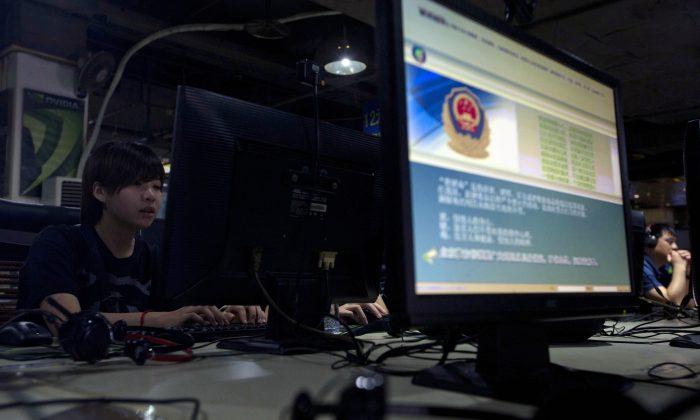Commentary
A Lebanese terrorist group called
Hezbollah is tempting fate. Iran’s most powerful anti-Israel and anti-American proxy is lobbing
missiles and rockets at small communities in northern Israel, including on
Christmas Eve and
Christmas Day. Over 1,000 Hezbollah attacks since Oct. 7, the day of the Hamas massacre, forced
86,000 Israelis to flee their northern homes.
Hezbollah attacked not only Jewish communities but, in the past, less defended
Christian Arab villages. The Christian Arabs fear more such attacks are coming. Hezbollah now engages in daily attacks on the north and joined Iran and Hamas in
cyberattacks that go beyond their former cyberespionage to the targeting of utilities, shipping, and communications infrastructure throughout Israel. Iran seeks to impose maximum economic damage and instability.
Hezbollah is more powerful than Hamas in terms of troops, missiles, and strategic depth. It can tactically retreat into the interior of Lebanon and then later reemerge to attack Israel’s north. Hezbollah connects directly to Iran overland through Iranian networks in Lebanon, Syria, and Iraq.
While Hamas militants are primarily of the Sunni faith, as in Egypt and Saudi Arabia, Hezbollah is Shia, like Iran and the majority of Iraq. The mullahs who rule Iran tend to have more influence in coreligionist communities and promote a
pan-Islamic doctrine of geographic expansionism.
Both Hezbollah and Hamas, according to an Israeli research organization, have used Iranian and North Korean expertise to build terrorist tunnel networks that sometimes stretch beneath borders, including between Gaza and Egypt, and Lebanon and Israel. Hezbollah tunnels in Lebanon are more advanced than those built by Hamas in Gaza.
The response of Israel to Hamas killing approximately 1,200 Israelis on Oct. 7 was an overwhelming bombing campaign with
AI-enabled targeting that—along with a blockade of food, fuel, and water—killed over
20,000 Palestinians. The Israeli Defense Force (IDF) is threatening to do the same to Hezbollah if it keeps attacking. The Israeli
assassination of a top Iranian terrorist leader in Syria on Christmas, and threats from Iran, in response, suggest future tension in Israel’s north.
Already, IDF retaliation against Hezbollah is causing over 10 times the casualties imposed on Israel, as is typical for IDF counter-strikes. Since Oct. 7, the IDF killed approximately
100 Hezbollah terrorists,
17 Lebanese civilians, and a Lebanese soldier, according to Lebanese sources. Israeli casualties in the north are so far just seven soldiers and four civilians.
Israel’s
counter-strikes are typically from fighter jets, tanks, and artillery, hitting Hezbollah launch points with pinpoint and immediate precision to eradicate terror teams. Reinforced Israeli troops are stacked at the border ready to invade Lebanon, and came close to doing so right after the Oct. 7 attacks, according to
The Wall Street Journal.
While Prime Minister Benjamin Netanyahu appears to want to de-escalate in the north so as to avoid the developing second front, Israeli strikes against immediate threats there are apparently forcing Hezbollah to withdraw some of its feared
Radwan special forces from near the Israeli border. Hezbollah is
banned south of the Litani River according to a 2006 U.N. Security Council resolution. Still, it continues to occupy territory close to Israel, from which it launched the most recent attacks. Some Israeli observers advocate pushing Hezbollah at least 5 miles (
8 km) from the Israeli border, which is the range of the terror group’s anti-tank guided missiles (ATGM).
Despite Hezbollah’s attacks, the terror group appears to be raising the temperature just enough so it appears to support Hamas but does not risk too much retaliation. Israel, on the other hand, responds with just enough force to eradicate active Hezbollah launch teams while not resorting to a costly ground invasion. Neither side is sufficiently confident to want a full-scale war in the north. Still, a miscalculation, for example, large-scale civilian casualties by a misdirected Israeli airstrike, could increase public anger in Lebanon and encourage Hezbollah into a much faster rate of missile attack that would force another IDF invasion. The attacks on both sides are thus a form of brinkmanship designed to achieve gains without falling into the kind of war being fought against Hamas.
The Gaza war, plus the reinforced northern border, is already taking a toll on Israel’s economy. As Iran is responsible for destabilizing the situation through its proxies—including Hezbollah, Hamas, and the Houthis—the international community should force Tehran to pay reparations that would go to not only rebuilding Gaza after the war but making Israel whole, including families who lost loved ones and the cost of Israel’s defense against all of Iran’s extended forms of terrorism. If costs are imposed upon the responsible parties, perhaps that will deter further violence for a return to diplomacy and, ultimately, to peace.
Views expressed in this article are opinions of the author and do not necessarily reflect the views of The Epoch Times.







